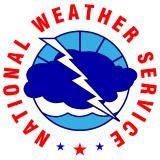Southeast Climate Monthly Webinar: November 28, 2023
This last month has seen above-average temperatures and below-average precipitation across much of the Southeast. The ongoing dryness led to rapidly intensifying and expanding drought across many parts of the region, in particular Alabama, Tennessee, Georgia, and the interior Carolinas. The lack of precipitation and drought conditions led to below-average streamflows and impacted agriculture, wildfire activity, and water supply. A strong El Niño is already in place and is currently strengthening.
Looking Ahead: The weather patterns are changing, with wetter conditions now occurring and expected to continue. There is more optimism and confidence that drought conditions may recede. No new drought development is expected over the winter, although dry conditions are expected to persist in some interior areas. While the strong El Niño conditions increase the chances that we will see recovery from drought, the uptick in rain events often associated with El Niño in this region also increases the chance for flooding through the winter.
Check out this month’s special presentation, “El Niño–Southern Oscillation (ENSO) Update + What Might We Expect This Winter?” from Michelle L’Heureux, NOAA’s Climate Prediction Center.
About This Webinar
The Southeast Climate monthly webinar series is hosted by the Southeast Regional Climate Center, the National Integrated Drought Information System (NIDIS), and the NOAA National Weather Service. These webinars provide the region with timely information on current and developing climate conditions such as drought, floods, and tropical storms, as well as climatic events like El Niño and La Niña. Speakers may also discuss the impacts of these conditions on topics such as agriculture production, water resources, wildfires, and ecosystems







